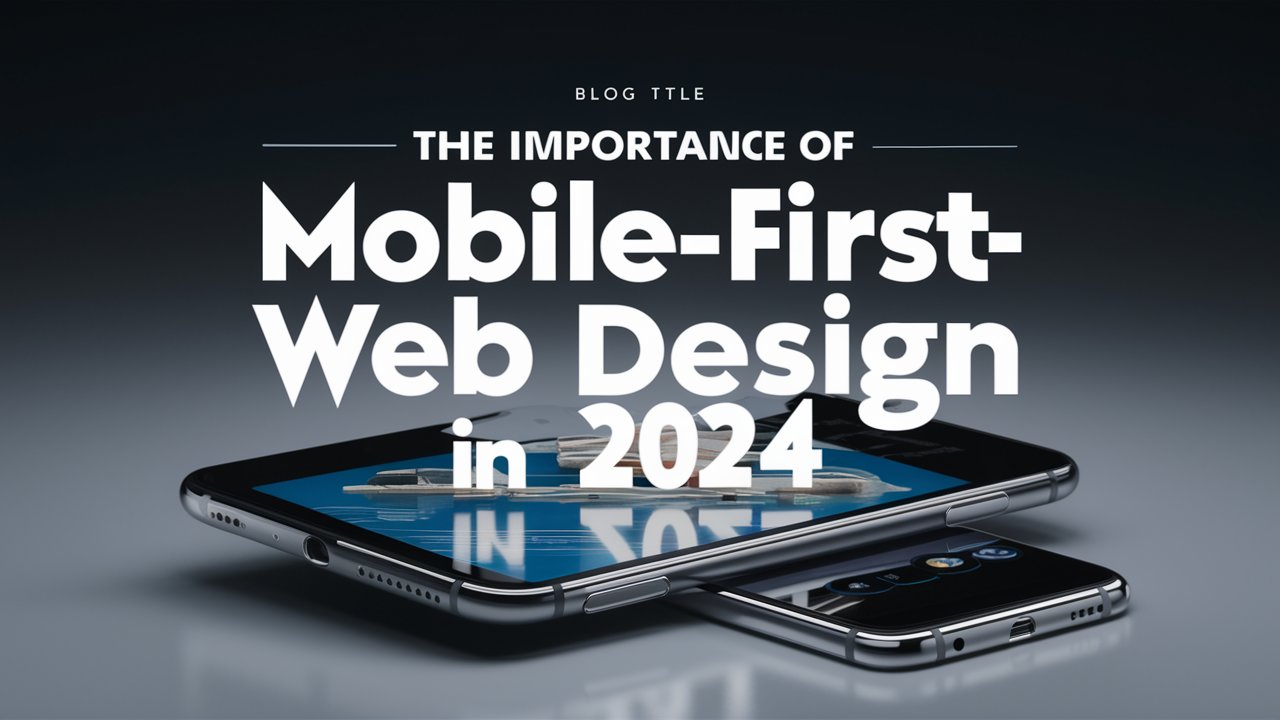With most internet traffic now originating from smartphones, mobile-first web design has become a cornerstone of success for any online presence. Whether you are running an e-commerce store, a portfolio website, or a corporate page, prioritizing the mobile user experience is no longer optional—it is mandatory.
Web design has moved beyond aesthetics. Today, it serves as a powerful tool for creating an intuitive, fast, and accessible user experience. The mobile-first design doesn’t mean simply shrinking a desktop site to fit smaller screens; it means building the site with mobile users in mind first and foremost. This approach directly impacts user satisfaction, search engine rankings, and overall business success.
What is Mobile-First Design?
Mobile-first design is a web development strategy where the mobile version of a website is designed before the desktop version. It involves prioritizing smaller screens, minimalistic layouts, and streamlined user experiences to ensure that the site performs seamlessly on smartphones and tablets. Once the mobile version is optimized, developers then scale up the design to accommodate larger devices, such as desktops and laptops.
The core principle of mobile-first design lies in simplicity and prioritization. By focusing on mobile devices first, businesses can:
- Deliver an improved user experience for the majority of visitors.
- Optimize page load speeds for mobile networks.
- Adapt to search engine algorithms like Google’s mobile-first indexing.
- Stay relevant in a mobile-centric digital world.
Why Mobile-First Design is Essential in 2024?
-
Mobile Usage Dominates the Internet
The rise of mobile devices has changed how people interact with websites. Recent statistics show that over 55% of global internet traffic comes from smartphones, and this figure continues to grow each year. Users now rely on their mobile devices to shop, browse, and access information on the go.
Businesses that prioritize mobile-first web design ensure their websites are fast, responsive, and user-friendly across all screen sizes. This directly impacts customer satisfaction and retention.
-
Search Engine Rankings (SEO)
Search engines like Google have embraced mobile-first indexing, meaning they predominantly crawl and index the mobile version of a website. If your site is not optimized for mobile, it can negatively impact your search engine rankings, making it harder for potential customers to find you online.
A mobile-first website boosts SEO performance by:
- Enhancing page load speeds.
- Reducing bounce rates.
- Providing a better overall user experience.
So, prioritizing mobile optimization can be the difference between appearing on the first page of search results or being buried under competitors.
-
Improved User Experience
User experience (UX) is at the heart of mobile-first web design. Mobile users often face challenges like slower internet speeds, limited screen space, and shorter attention spans. A mobile-first approach addresses these challenges by:
- Designing clean, clutter-free layouts.
- Ensuring navigation is intuitive and thumb-friendly.
- Prioritizing essential content over unnecessary elements.
A positive user experience not only keeps visitors on your site but also encourages them to take desired actions, such as making a purchase, filling out a form, or subscribing to your newsletter.
Key Benefits of Mobile-First Design
-
Faster Loading Times
Mobile users expect quick results. If a website takes more than 3 seconds to load, most users will leave. The mobile-first design emphasizes performance optimization, which includes:
- Compressing images for faster loading.
- Reducing unnecessary code and heavy scripts.
- Implementing caching and lazy loading for better efficiency.
-
Higher Conversion Rates
Websites optimized for mobile tend to convert better. Whether you’re selling products, collecting leads, or driving traffic, a mobile-first design ensures users can complete actions seamlessly.
- Competitive Advantage
As more businesses recognize the importance of mobile-first design, those who fail to adapt risk falling behind. Having a responsive, mobile-friendly website gives you a competitive edge by ensuring your business meets the expectations of modern users.
-
Reach a Broader Audience
Many people rely solely on smartphones to access the internet, particularly in regions where mobile devices are more affordable than computers. A mobile-first approach ensures you cater to this growing segment of users and maximize your potential audience reach.
How a Web Developer Can Help?
For businesses looking to build a mobile-first website, hiring a skilled web developer in Lahore can streamline the process. Professional developers understand the technical aspects of mobile optimization, from implementing responsive design principles to improving website speed and SEO performance.
A reliable developer ensures that your website:
- Meets mobile-first design standards.
- Aligns with SEO best practices.
- Provides a seamless experience for all users, regardless of device.
By collaborating with an expert, businesses can create a site that not only looks great but also drives tangible results.
Emerging Trends in Mobile-First Web Design
-
Dark Mode Optimization
Dark mode is increasingly popular for reducing eye strain and conserving battery life on mobile devices. Websites that offer a dark mode option enhance user comfort and accessibility.
-
Voice Search Compatibility
With the rise of virtual assistants like Siri and Google Assistant, optimizing your website for voice search ensures it remains accessible to users who prefer hands-free browsing.
-
AI-Powered Personalization
AI tools can deliver personalized content and recommendations based on user behavior, enhancing engagement and improving user satisfaction.
-
Progressive Web Apps (PWAs)
PWAs combine the functionality of mobile apps with the accessibility of websites. They load quickly, work offline, and provide an app-like experience without requiring downloads.
Conclusion
In 2024, mobile-first web design is not just a trend but a necessity. With more users relying on smartphones to access the internet, businesses must prioritize mobile optimization to stay relevant, competitive, and accessible. Mobile-first design improves user experience, boosts SEO rankings, and increases conversion rates, making it a critical factor for online success. By following best practices and working with a professional web developer in Lahore, businesses can create websites that meet the needs of modern users while staying ahead of emerging trends.
